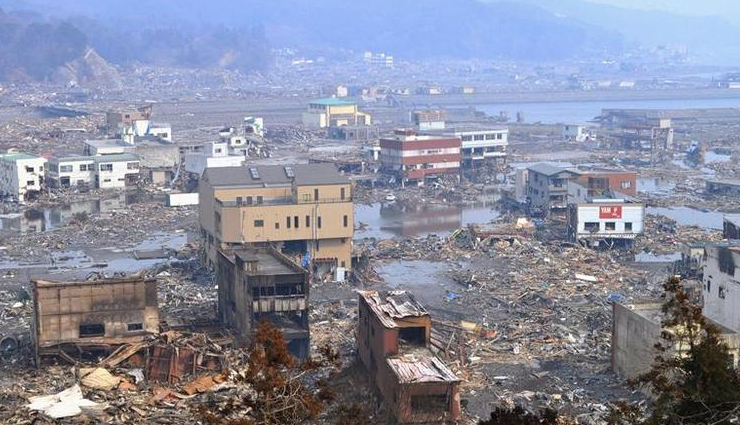
Due to such heavy human and economic losses, in December 2015, the United Nations General Assembly designated 5 November as World Tsunami Awareness Day to promote a global culture of tsunami awareness. At its fourth edition, 2019 World Tsunami Awareness Day promotes Target (d) of the “Sendai Seven Campaign” which focuses on reducing disaster damage to critical infrastructure and disruption of basic services. Here is a list of cities that were majorly devastated the Worst Tsunamis in History:

On March 11, 2011, a 9.0-magnitude earthquake hit the Tohoku region of Japan triggering tsunamis as high as 9.8 feet. It was the largest earthquake to have ever hit the country and the fourth largest earthquake ever recorded. Sweeping over the east coast of Japan, this powerful tsunami was travelling 800km per hour. It killed more than 18,000 people, with 9,522 missing and 2,409 injured. In addition to that, the waves also set off radioactive leaks at the Fukushima Daiichi nuclear power plant and led to a nuclear emergency. Approximately 452,000 people were relocated to shelters, and still, remain displaced from their destroyed homes.
The Great Lisbon Earthquake on Nov. 1, 1755, spawned a series of three huge waves to strike various towns along the west coast of Portugal and southern Spain. With an epicenter in the Atlantic Ocean about 200 km of Cape St. Vincent in southern Portugal, the earthquake was estimated to be between 8.5 and 9.0 on the Richter scale. The waves caused by this earthquake occurred approximately 40 minutes after the earthquake and destroyed most of Lisbon in the Kingdom of Portugal. This double disaster further sparked the third wave of devastation with fires throughout the urban areas. The waves were as high as 66 feet that hit the coast of North Africa and struck islands across the Atlantic like Martinique and Barbados. This disaster killed 40,000 to 50,000 across Portugal, Spain, and Morocco.
An Indonesian volcano Krakatoa erupted four times in August 1883 that in turn led to four different tsunamis over 100 feet tall. The Krakatau caldera volcano erupted with such violence that there were absolutely no survivors at the island of Sebesi, which is situated 8 miles away from the crater. The tsunami waves reached as high as 150 feet (37 m) and are said to have pushed coral blocks as large as 600 tons onto the shore. Almost 40,000 people in the Indonesian Islands of western Java and southern Sumatra were killed; however, most of those deaths attributed to the tsunami waves.
An undersea earthquake with a magnitude between 9.1 and 9.3 let loose a deadly Tsunami that was felt in Sumatra, parts of Bangladesh, India, Malaysia, Maldives, Myanmar, Singapore, Sri Lanka, and Thailand. The ensuing Tsunami also hit 14 countries as far away as South Africa and the death toll was an estimated 230,000 people (about a third of those children). The fault zone that caused the tsunami was roughly 994 miles long (1300 km long) that led to the tsunami as tall as 50 m, reaching 5 km inland near Meubolah, Sumatra.
The 1707 Hoei earthquake with an estimated magnitude of 8.4 was the second largest earthquake to have ever hit Japan besides the 2011 Tohoku earthquake. It caused a consequent tsunami that led to the sea waves as high as 25 m to hammer into the Pacific coasts of Kyushu, Shikoku, and Honshin. A total of nearly 30,000 buildings were damaged in the affected regions and about 30,000 people were killed due to this disaster. It was reported that roughly a dozen large waves were counted between 3 pm and 4 pm, some of them extending several kilometers inland at Kochi.
On Dec. 28, 1908, a 7.5 magnitude quake, struck the Italian cities of Messina and Reggio di Calabria at 5:20 a.m. While the earthquake only lasted for 30 to 40 seconds, it triggered an 8-meter high tsunami which killed almost 40, 000 people in the two cities alone. The epicenter of the earthquake was under the Strait of Messina, which separates the island of Sicily from the province of Calabria, the “toe” of Italy’s geographical “boot.”